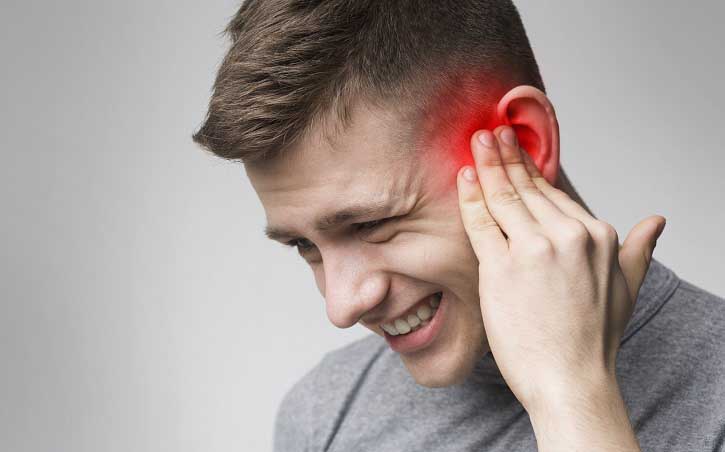Teens who are unhappy with their physical appearance are at significantly heightened risk of depression by the time they reach early adulthood, reveals the first UK study of its kind, published online in the Journal of Epidemiology & Community Health.
The size of the increased risk ranges from 50% to 285%, the findings show, with boys more likely to experience severe depression than girls.
Dislike of one’s physical appearance, formally known as body dissatisfaction, affects up to 61% of teens worldwide. It has been identified as a risk factor for eating disorders, unhealthy behaviours, and poor mental health.
Most published research on body dissatisfaction and depression has been carried out in the US, and few studies have explored the issue among young men and Millennials--those born between 1981 and 1997-- to factor in the influence of the internet, technology, and social media.
In a bid to plug these knowledge gaps, the researchers drew on nearly 4000 participants in the Avon Longitudinal Study of Parents and Children (ALSPAC), a population-based long term tracking study of women and their children born in 1991/2 and living in Somerset, England.
When they were 14, some 3753 teens were asked to rate satisfaction with their physical appearance by scoring their weight, figure, body build and specific areas, including breasts, stomach, waist, thighs, buttocks, hips, legs, face and hair, on a 5-point scale, where 0 equals ‘extremely dissatisfied’ and 5 equals ‘extremely satisfied’.
Both the boys (1675) and the girls (2078) were mildly satisfied with their body, overall. But girls were more dissatisfied than boys.
Girls tended to dislike their thighs, stomach, and weight, but liked their hair and hips. Boys tended to be dissatisfied with body build, stomach, and hips, but weren’t bothered about their hair, weight, or legs.
Nearly 1 in 3 (32%) of the girls and around 1 in 7 (14%) of the boys were dissatisfied with their weight, and around 1 in 4 (27%) girls and 1 in 7 (14%) boys were dissatisfied with their figure.
When they were 18, depressive symptoms were formally assessed using a validated scale (CIS-R). Girls were more likely to experience episodes of depression than the boys.
One in 10 (10%) of the girls reported at least one mild depressive episode compared with 1 in 20 (5%) of the boys. Nearly 7% of the girls and nearly 3% of the boys reported at least one moderately severe depressive episode, while severe depressive episode(s) affected 1.5% of the girls and less than 1% (0.7%) of the boys.
Analysis of the data revealed that body dissatisfaction at the age of 14 predicted depressive episodes of all degrees of severity among the girls, and mild and severe depressive episodes among the boys by the time they were 18 years old.
These findings held true, even after taking account of depressive symptoms at the age of 14.
Among the girls, each increase in the body dissatisfaction scale at the age of 14 was associated with a heightened risk of experiencing at least one mild (63%), moderate (67%) and/or severe (84%) depressive episode at the age of 18.
The strength of this association increased with the severity of the depressive episode.
The impact of body dissatisfaction on mild depressive episodes was comparable between boys and girls, but its impact on severe depressive episodes was stronger among the boys.
Each increase in the body dissatisfaction scale at the age of 14 among the boys was associated with a heightened risk of experiencing at least one mild (50%) and/or severe (285%) depressive episode at the age of 18.
“it is possible that in the era of social media and increasing pressures on body ideals, male adolescents have also become sensitive to [idealised body image] pressures, which may translate into later depressive episodes,” suggest the researchers.
The researchers acknowledge that the lack of ethnic and socioeconomic diversity in the ALSPAC data, and the absence of any information on sexual orientation may limit the wider applicability of the findings.
And the measure of body dissatisfaction assessed in the questionnaires was skewed towards female appearance ideals.
Nevertheless, they conclude: “These findings demonstrate that body dissatisfaction should be considered as a public health issue of pressing concern. [It] is highly prevalent among young people in the general population and has an increasing incidence; the findings indicate that reducing body dissatisfaction might be an effective strategy to reduce mental health issues.”

 Heightened risk ranges from 50% to 285% by the age of 18; depression severity greater in boys
Heightened risk ranges from 50% to 285% by the age of 18; depression severity greater in boys





.png)














.jpeg)


.jpeg)



.jpeg)
.jpeg)






.jpeg)





